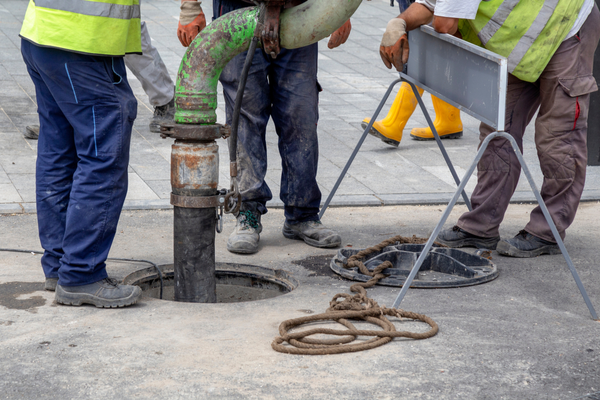Drainage is a critical part of the construction project. When constructing buildings, roads, bridges or other structures, it may seem like water systems should be left out. However, it is crucial to design and decide on a building's drainage system before construction even begins.
Here's why. Water can cause a lot of damage if you don't have a plan for it. In the event of significant rain or flooding, water will accumulate. If the water has nowhere to go, you're looking at potential foundation issues, erosion, sinkholes and more.
Of course, these are the worst-case scenarios. However, even a little water damage can cause mold, discoloration, cracking, and more—and no one wants that. That's why it's crucial to address a building's drainage options from the beginning.
How drainage works
As you would expect, different types of drains work differently. However, all drains serve the same general purpose. Whether installed on a building or a bridge, the purpose of the drain is to remove excess surface water and allow it to flow somewhere where it won't cause harm.
Drains are often directed toward beaches, creeks, rivers, or other water outlets to prevent damage to commercial properties, homes, and land. However, this is not always the case. Sometimes they simply slow down the water absorption rate so the ground has time to adjust without causing damage.
Different drainage options

There is no shortage of drainage options on the market. The correct drainage system often depends on the needs of the building. For example, a food packaging warehouse will have more extensive drainage needs than an office.
The right one for your construction project depends on several factors, but here are the five most popular types of drainage systems.
- 1. Trench Drains – There are several types of drainage systems, but the most popular type is the grated trench drainage system. Grate ditch drainage systems use a system of ditches and grates to move water toward an underground pipe. This tube is usually sent to a water outlet or other area accepted for excess water.
- 2. Slot Drains – Slot drains work like grated trench drains, except they don't need the grate. They have a thinner design, so they usually go on the floor or floor without needing a cover. Slot drains are a popular design for sanitary sewers , which are commonly found in food preparation warehouses or other buildings that require high-level sanitation. Slot drains and toilet drains are often made of stainless steel to prevent corrosion and bacteria buildup.
- 3. HDPE Drains – HDPE stands for high-density polyethylene drains. These drains are prefabricated systems. They function like drainage ditches, but you don't need to build them yourself. Instead, just place them on the floor and design around them.
- 4. French Drains – French drain systems are intended for residential projects to redirect water away from landscaping and homes. These systems use a series of pipes to direct water runoff away from the property and toward the sewer, ditch or cistern.
- 5. Ditch Drainage System – Valley drainage systems are nothing more than a shallow ditch lined with grass (or other vegetation) to prevent puddles and flooding. Swale systems are used more for landscaping than construction, but they are worth mentioning.
There are even more specific types of drainage systems within each of these primary drainage types. Ultimately, the right drainage system for your project depends on the project as a whole.
However, one thing remains clear. All of these options need to be investigated and considered before starting construction. We must have all of these options because just because an option works for a specific project does not mean it is suitable for another.
How do you decide which type of drainage is right for your project?
How do you determine which type of drainage is right for your project? In short, you'll want to do some engineering analysis. Take a look at the land's ability to drain water naturally and investigate the area's average annual precipitation. It's also important to consider other things like the purpose of the building, the amount of traffic the drainage system will have to accommodate, and the altitude where the drainage system is going.
You will also need to investigate the availability of water outlets and where other properties are sending excess water.
Once you consider all of these factors, you will be able to identify the right type of drainage for your project. Just make sure you do this at the beginning of the design process, not the end. Otherwise, you could have a lot of headaches in the future.
About the author – Skylar Ross is a contributor to the Innovative Materials blog. He is a content writer for the construction and home improvement industries, with interests in landscaping, exterior renovation, and interior design. Skylar is focused on educating homeowners, contractors and architects about innovative materials and construction methods that increase property value, improve sustainability and create a warm, welcoming environment. You can contact him via email at innovativeflooringmaterials@gmail.com.

